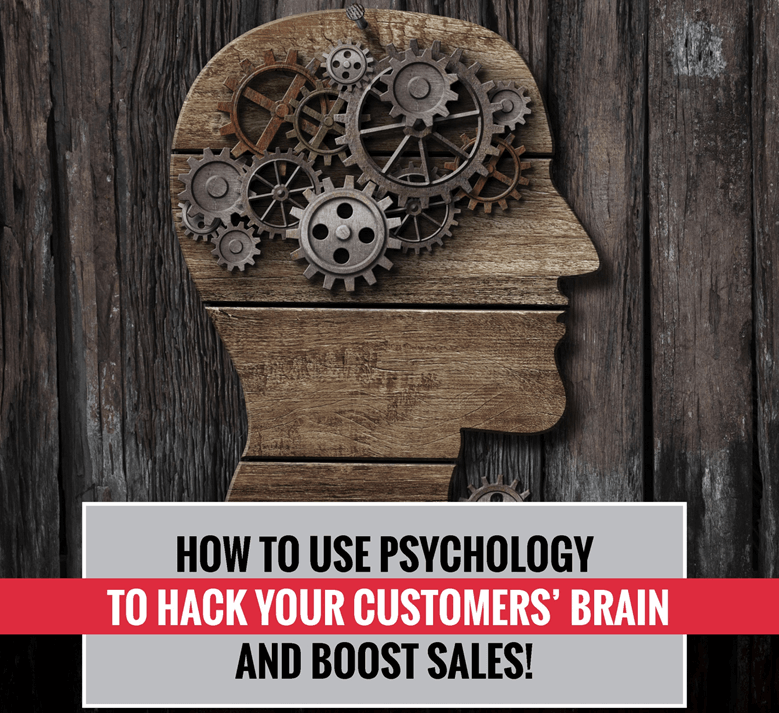
Wouldn’t it be cool if you can directly influence the way your audience reacts to your website and content?
It sounds like something out of a Frankenstein story – or else a terrifying, dystopian tale that could keep you awake at night.
Right?
Well… maybe. But the truth is that it’s not as manipulative (or scary) as it sounds. The human brain is capable of creative and innovative thoughts. But – it’s also subject to a slew of weird glitches called cognitive biases.
Cognitive biases are basically mental shortcuts. They’re hard-coded into our brains, so much so that even people who understand them can still fall under their spells.
The good news for you is that you can use the psychology behind these biases to connect with people in your target audience, build your business reputation, and even convince people to buy your products. Here are 6 ways you can use psychology in your marketing.

You ever notice how much your thought process and your decision-making process changes when your emotions are engaged? If so, you’re not alone. Most people, even those that think they’re making decisions solely based on logic, can be swayed by their emotions.
Charities know this. It’s why the ASPCA features neglected animals in their ads. They know that animal lovers will want to help when they see those images.
Do you have a compelling origin story for your business? Are you connected with a local charity? Sharing these things can help people form an emotional connection to you – and increase the chances that they’ll turn into paying customers.


The marketing industry is known to use Reciprocity as useful tool for cognitive bias. Reciprocity is the thing that’s triggered when someone gives you a gift and you don’t have something to give them in return. You feel a bit guilty – and you’re more likely to get them a gift as a result.
In marketing, you can trigger Reciprocity by giving people something for free. A lot of businesses use lead magnets, such as a short eBook or template, to entice people to sign up for their lists.
Giving people a sneak peak or a free sample can drive sales. Or, you might want to try offering a BOGO (that’s buy one, get one free) instead. These tactics are simple, but they can increase your profits dramatically if you use them properly.


The right picture frame can enhance the image it holds – and the wrong one can detract from it. The same is true of your products and services.
The language you use to describe your company and products can make a huge difference in how potential customers see you. It’s why restaurant menus feature words like gooey, crisp, and fresh. These words entice. If they described their meals with words like unhealthy, calorie-laden, they wouldn’t sell.
Look at how you’re framing your products right now. Is the language you’re using enticing? Are you highlighting the best things about your product?
If you’re not, it’s time to rethink your descriptions. A customer is more likely to buy something that is framed positively than something with a neutral or negative frame.

The Anchoring Effect is a cognitive bias that shows that people attach importance to the first price they see for a product. TV informercials and sales pages for affiliate products tend to use anchoring very well.
For example, they might start off by telling you that the product they’re selling is a $100 value. When they do, that price becomes the anchor price. The product is worth $100.
Then, they chip away at the price. By the time you get to the end of the commercial (or the bottom of the page), the asking price of $29 seems like a fantastic bargain.
You don’t have to be as hype-y as those commercials, but there are some things you can do to anchor your product’s price in people’s minds:
- Display the product’s original price right next to the sale price
- In a bundle, list each item’s retail value before you give the bundle price
- Tell people how much they’re saving (50% off!)
Anything you can do to anchor a high price in the audience’s mind will make it easier for them to buy your products at your asking price.

If you have been on the internet for some time now I am sure you know of the internet acronym FOMO – the fear of missing out. It turns out that’s more than just a handy abbreviation. It’s a tool that you can use in your marketing.
Scarcity is something that they use all the time on the Home Shopping Network. If you watch, you’ll notice there’s always a count of how many items are left. Watching that number tick down to zero motivates people who might be on the fence to pick up the phone.
You can use scarcity by running 24-hour sales or including a countdown clock. One way to do it is by creating an email series. Even adding a PS (You only have 12 more hours to take advantage of this price!) can be enough to motivate people to buy from you.

We like to think of ourselves as individuals, but human beings have a lot in common with herd animals. We stick with the crowd most of the time.
The psychological term for this phenomenon is Social Proof – or, if you prefer, the Bandwagon Effect. It says that people are more likely to go with the popular choice even if they don’t like it (or agree with it) at first.
You can use social proof in marketing in several ways. For example:
- Include a tally of your subscribers or views on your blog or social media pages
- Highlight popular products (Our most popular item!)
- Create a social media group for your customers
These things will help create the perception that everybody loves your products – and convince new customers to follow suit.
Thought control might sound like science fiction…
…but it’s really just a matter of understanding basic psychology and using what you learn in your marketing. These six psychological principles can help you connect with your audience and increase your bottom line.
